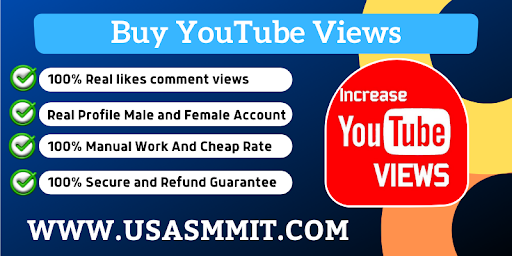
In recent years, the popularity of YouTube as a platform for content creators and marketers has grown exponentially. With over 2 billion monthly active users, YouTube provides an opportunity for individuals and businesses alike to reach a vast audience and monetize their content. However, with the rise of buying YouTube views, there is a growing debate over whether or not to turn off monetization when purchasing views. In this article, we will explore both sides of the argument and discuss whether or not there is a need to turn off monetization when buying YouTube views.
Firstly, it is important to understand what buying YouTube views means. Buying views involves purchasing views from a third-party provider in order to artificially inflate the number of views on a video. This can be done in several ways, such as by using bots or paying individuals to watch the video. The primary reason why people buy YouTube views is to increase the visibility of their videos and, in turn, attract more organic views and subscribers.
Now, let’s examine why some people advocate for turning off monetization when purchasing YouTube views. One of the main arguments against monetizing videos that have been artificially inflated is that it violates YouTube’s terms of service. YouTube’s policy clearly states that the use of bots, third-party services, or any other means to artificially inflate video views is strictly prohibited. This means that if YouTube discovers that a video has been artificially inflated, it can be penalized or even removed from the platform.
In addition to violating YouTube’s terms of service, monetizing videos that have been artificially inflated can also harm a creator’s reputation. If viewers discover that a creator has bought views, it can lead to a loss of trust and credibility. Viewers may feel that the creator is not genuine and is only concerned with boosting their numbers, which can harm their ability to attract and retain subscribers.
Another argument for turning off monetization when buying YouTube views is that it can lead to lower engagement rates. When a video has a high number of views but low engagement, it can signal to YouTube’s algorithm that the video is not of high quality. This can lead to the video being deprioritized in search results and recommended videos, ultimately resulting in fewer organic views.
On the other hand, some argue that there is no need to turn off monetization when buying YouTube views. One argument is that as long as the views are purchased from a reputable provider, there is no harm in monetizing the video. Reputable providers use legitimate methods to generate views, such as promoting the video through social media or advertising. These methods are not only legal but also have the potential to attract more organic views and engagement.
Another argument for monetizing videos that have been artificially inflated is that it can help to recoup the costs of purchasing views. Buying views can be expensive, especially for creators who are just starting out and have limited budgets. By monetizing their videos, creators can earn back some of the money they spent on buying views, which can help to offset the costs and make it easier to continue producing content.
Moreover, some creators argue that turning off monetization when purchasing views is a missed opportunity to earn revenue. YouTube’s monetization program allows creators to earn money from advertisements that are displayed on their videos. By turning off monetization, creators are essentially leaving money on the table, even if the views are artificially inflated.
One important consideration when it comes to the decision to turn off monetization when buying YouTube views is the impact on the creator’s relationship with their audience. Viewers may have different opinions on the practice of buying views, and some may be more forgiving than others. However, if a creator is discovered to have bought views, it could lead to a loss of trust and credibility among their audience. This could result in a decline in views, engagement, and ultimately revenue, as viewers may feel that the creator is not genuine and only concerned with boosting their numbers.
It is also worth considering the long-term implications of buying YT views and turning off monetization. While the short-term benefits may be appealing, such as increased visibility and potentially more revenue, the long-term consequences could be damaging. YouTube’s algorithm is designed to prioritize high-quality content that engages viewers, and artificially inflating views can signal to the algorithm that a video is not of high quality. This can lead to deprioritization in search results and recommended videos, resulting in fewer organic views in the long run.
Ultimately, the decision to turn off monetization when buying YouTube views should be made with careful consideration of the potential risks and benefits. Creators should weigh the potential consequences of violating YouTube’s terms of service and damaging their reputation against the potential benefits of recouping costs and earning revenue.
It is important to note that there are legitimate ways to promote videos and attract organic views, such as through search engine optimization (SEO), social media promotion, and collaborations with other creators. While these methods may require more effort and time, they can help to build a loyal and engaged audience that is more likely to stick around for the long term.
In conclusion, while there may be arguments for both turning off monetization and leaving it on when buying YouTube views, it is important to consider the potential risks and benefits before making a decision. Creators should weigh the short-term benefits of increased visibility and revenue against the long-term consequences of potentially damaging their reputation and relationship with their audience. Ultimately, creators should focus on building a loyal and engaged audience through legitimate means, such as producing high-quality content, promoting their videos through legitimate channels, and engaging with their viewers. By doing so, they can build a sustainable and successful presence on the platform that will serve them well in the long run. Well, that’s all we have in our pockets for now!







